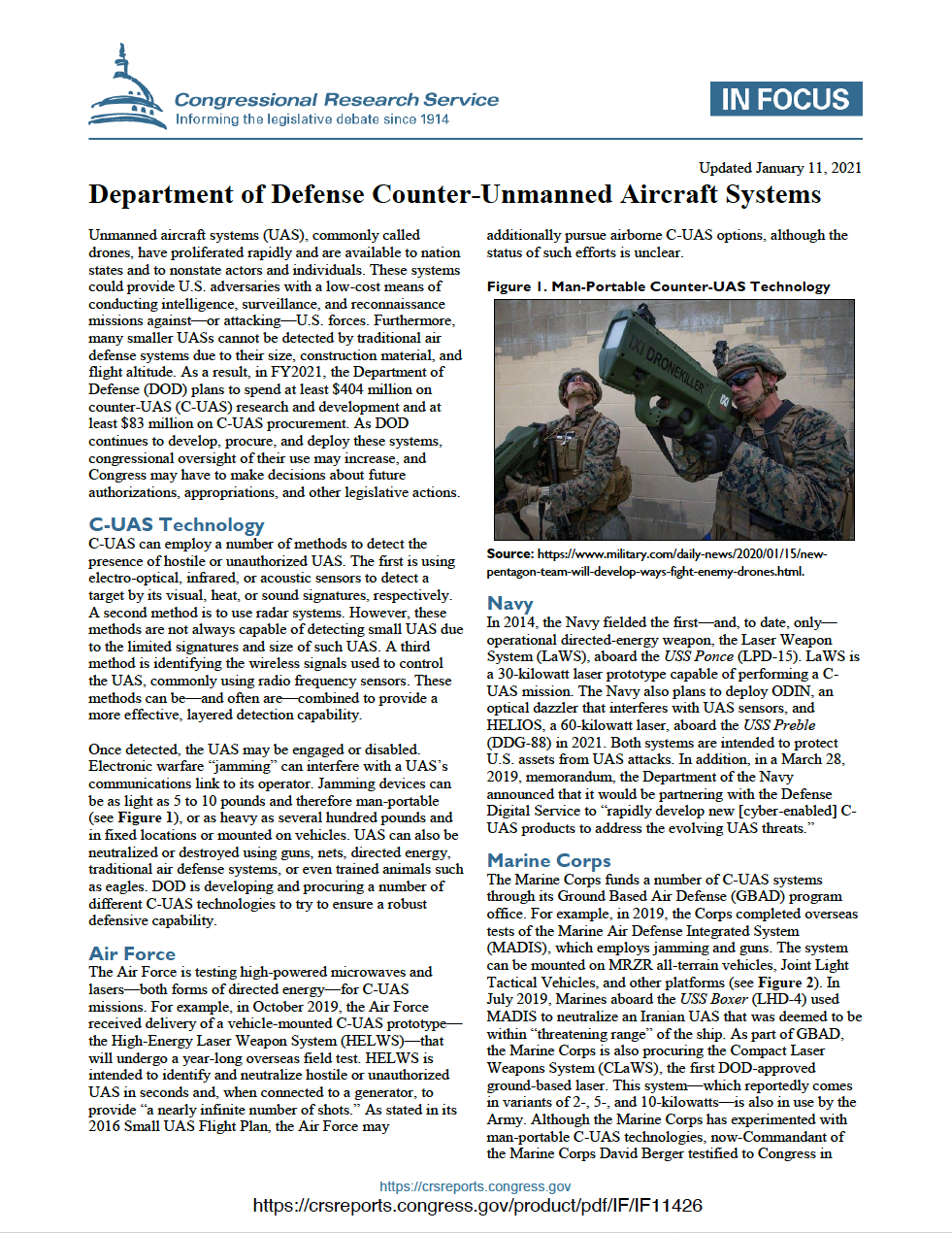“[I]n FY2021, the Department of Defense (DOD) plans to spend at least $404 million on counter-UAS (C-UAS) research and development and at least $83 million on C-UAS procurement,” accounting to a recent Congressional Research Service IN FOCUS.
Detection technologies being pursued include electro-optical, infrared, and acoustic sensors; radar; control signal detection; and combinations of those technologies. “Once detected, the UAS may be engaged or disabled. Electronic warfare “jamming” can interfere with a UAS’s communications link to its operator. Jamming devices can be as light as 5 to 10 pounds and therefore man-portable (see Figure 1), or as heavy as several hundred pounds and in fixed locations or mounted on vehicles. UAS can also be neutralized or destroyed using guns, nets, directed energy, traditional air defense systems, or even trained animals such as eagles. DOD is developing and procuring a number of different C-UAS technologies to try to ensure a robust defensive capability.” (Hoehn and Sayler, 2021)
Use of C-UAS technologies, including directed energy, continue to be explored during collaborative Joint Interagency Field Experimentation (JIFX) Program field experimentation events. Sponsored by the Undersecretary of Defense for Research and Engineering Rapid Reaction Technology Office, this Naval Postgraduate School-led program brings together teams from Private Sector, Academia, Non-Governmental Organizations, and state and federal government agencies quarterly to learn from each other and assist in advancing system capabilities. JIFX alumni include technologies that transitioned to DOD systems acquisitions programs, Fleet Experimentation, and Small Business Innovation Research (SBIR) Phase I and Phase II awardees.
JIFX’ next event is scheduled for the week of 1 March 2021 and will, again, provide a virtual environment for participants with limited physics-based experimentation.
Issued earlier this month, the DOD's Counter-Small Unmanned Aircraft Systems Strategy provided a roadmap for the next several years.


